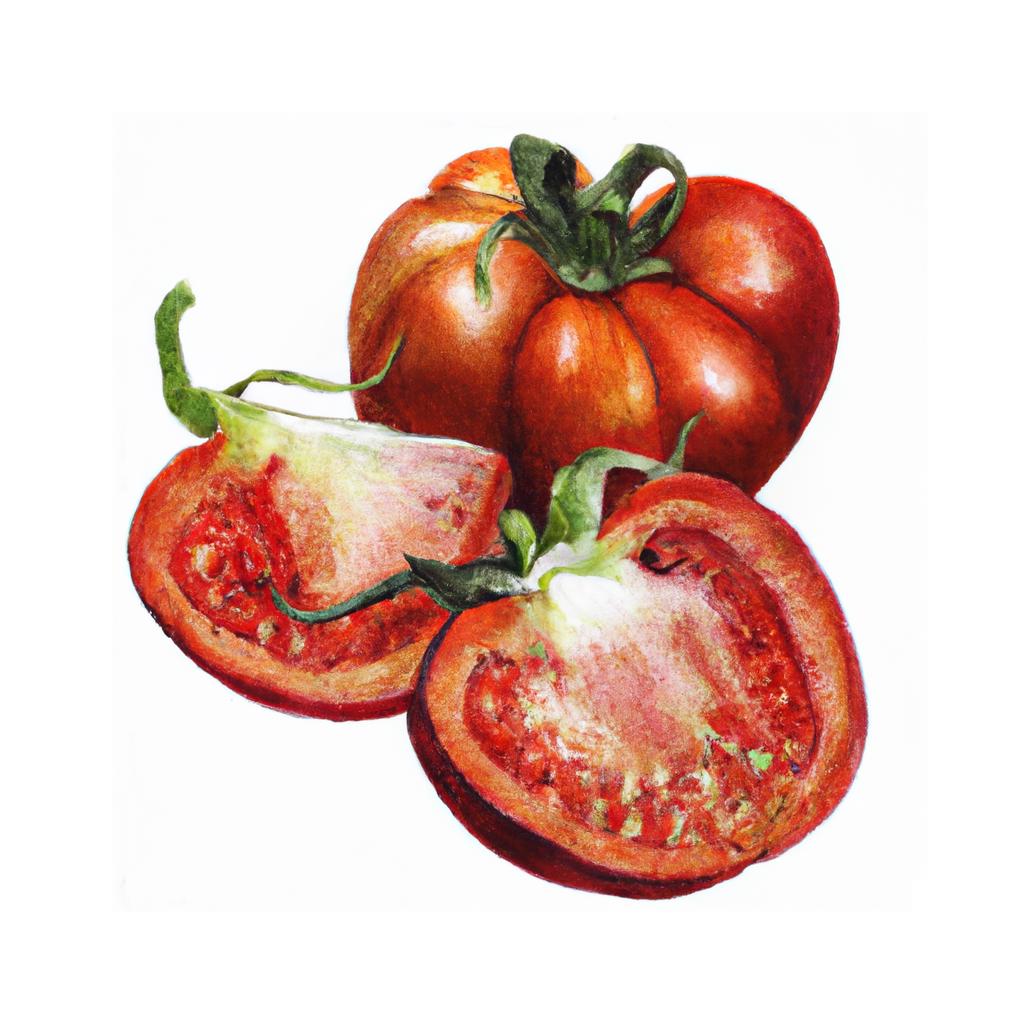
The tomato, scientifically known as Solanum lycopersicum, is a popular and versatile vegetable widely grown in gardens and farms around the world. Contrary to popular belief, the tomato is a fruit, botanically speaking; however, it is typically treated and consumed as a vegetable in culinary contexts. Tomatoes come in various sizes, shapes, and colors, including red, yellow, orange, green, and purple.
The history of tomatoes can be traced back to their origin in South America, where they were first cultivated by the Aztecs and other Mesoamerican civilizations. They were later introduced to Europe during the Columbian Exchange in the early 16th century, where they eventually spread throughout the world. A wide variety of heirloom tomato plants still exist today, preserving the unique flavors and textures of these historic varieties.
Tomatoes are known for their rich nutritional content, including vitamins C, K, and A, as well as potassium, folate, and antioxidants such as lycopene. These nutrients provide various health benefits, such as supporting heart health, skin health, and reducing the risk of certain types of cancer.
These versatile vegetables can be enjoyed raw in salads and sandwiches, or cooked and incorporated into sauces, soups, stews, and casseroles. They are a staple ingredient in many Mediterranean dishes, including pasta, pizza, and bruschetta, as well as Mexican cuisine, such as salsas and guacamole. Tomatoes can also be preserved by canning, drying, or freezing, allowing them to be enjoyed year-round.
This is advice is most applicable to growers in the UK, you may need to adjust the timings if you live somewhere with a different climate and/or seasons.
| Month | Tasks | Advice |
|---|---|---|
| January | - | - |
| February | Sow seeds indoors, | Choose a warm, well-lit spot for your seedlings. |
| March | Transplant seedlings into larger pots if needed, | Provide plenty of light as they grow. |
| April | Harden off seedlings, Plant out in greenhouse, | Gradually expose them to outdoor conditions before planting. |
| May | Plant out hardened seedlings, Water regularly, | Maintain consistent moisture and provide support with stakes or cages. |
| June | Pinch out side shoots, Feed with tomato fertiliser, | Remove any yellowing leaves and provide adequate nutrients. |
| July | Water consistently, Continue feeding with tomato fertiliser, Begin harvesting when fruits are ripe, | Pick tomatoes as they ripen to encourage more fruit production. |
| August | Harvest ripe fruits, Continue watering and feeding, | Monitor for any signs of disease. |
| September | Complete harvesting, Remove plants, | Clear away debris to discourage overwintering pests. |
| October | - | - |
| November | - | - |
| December | - | - |